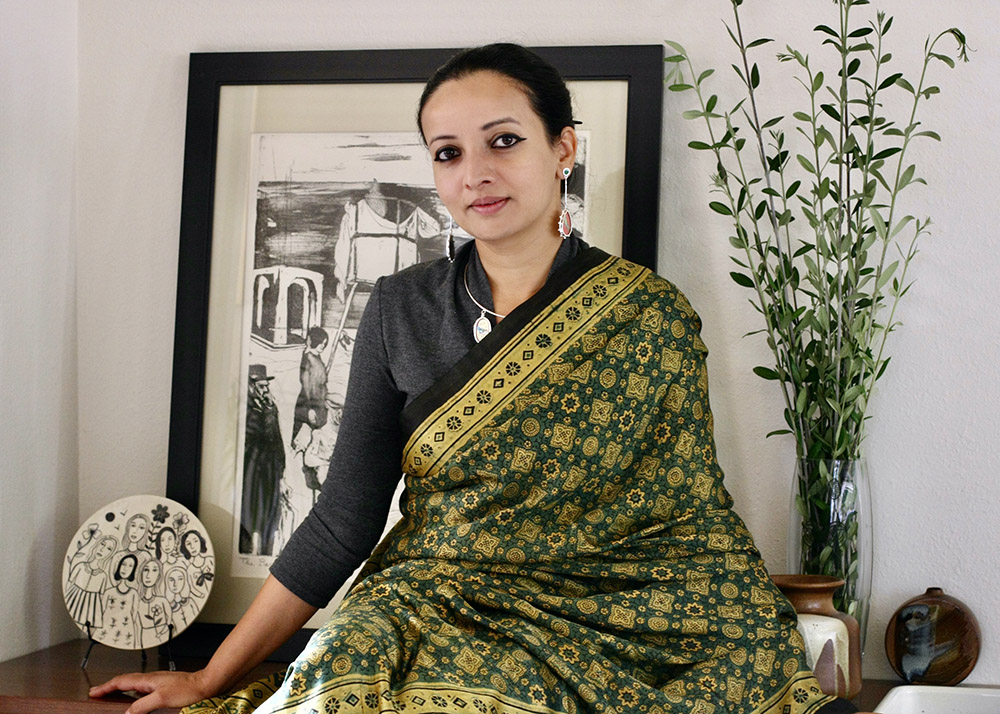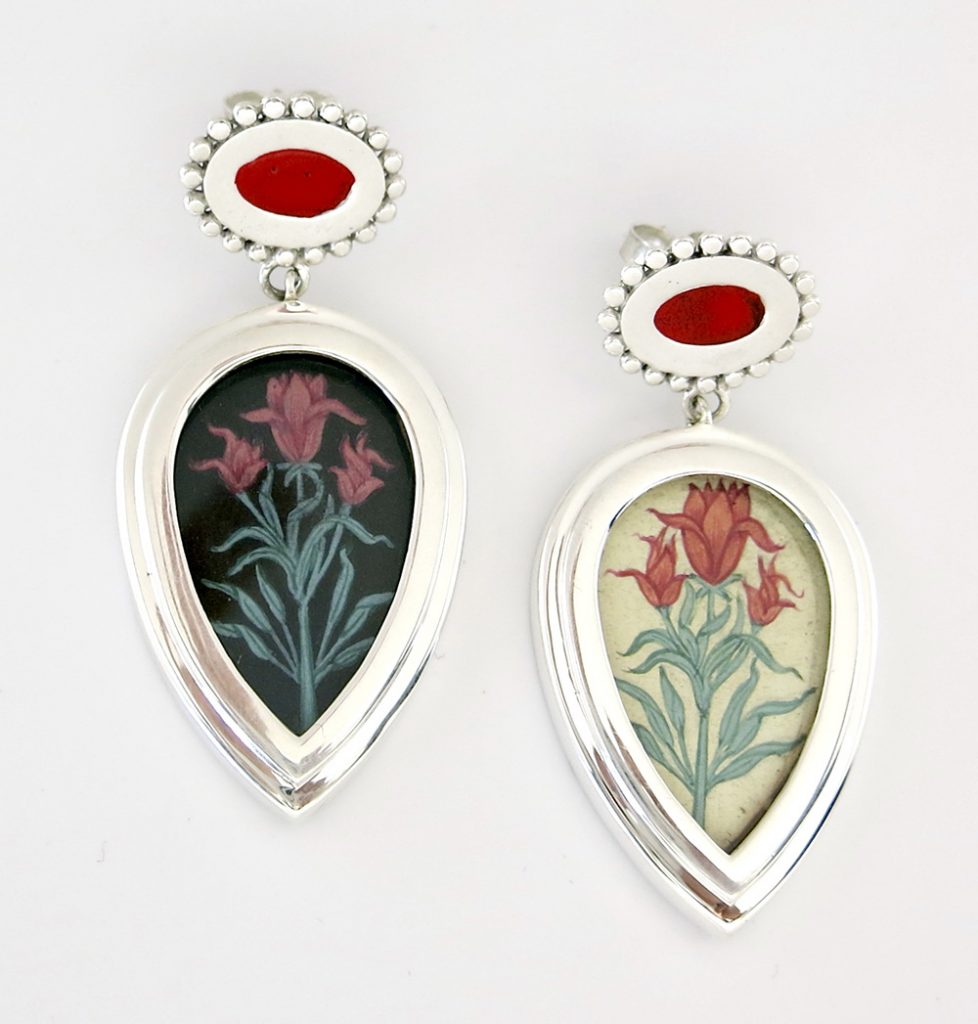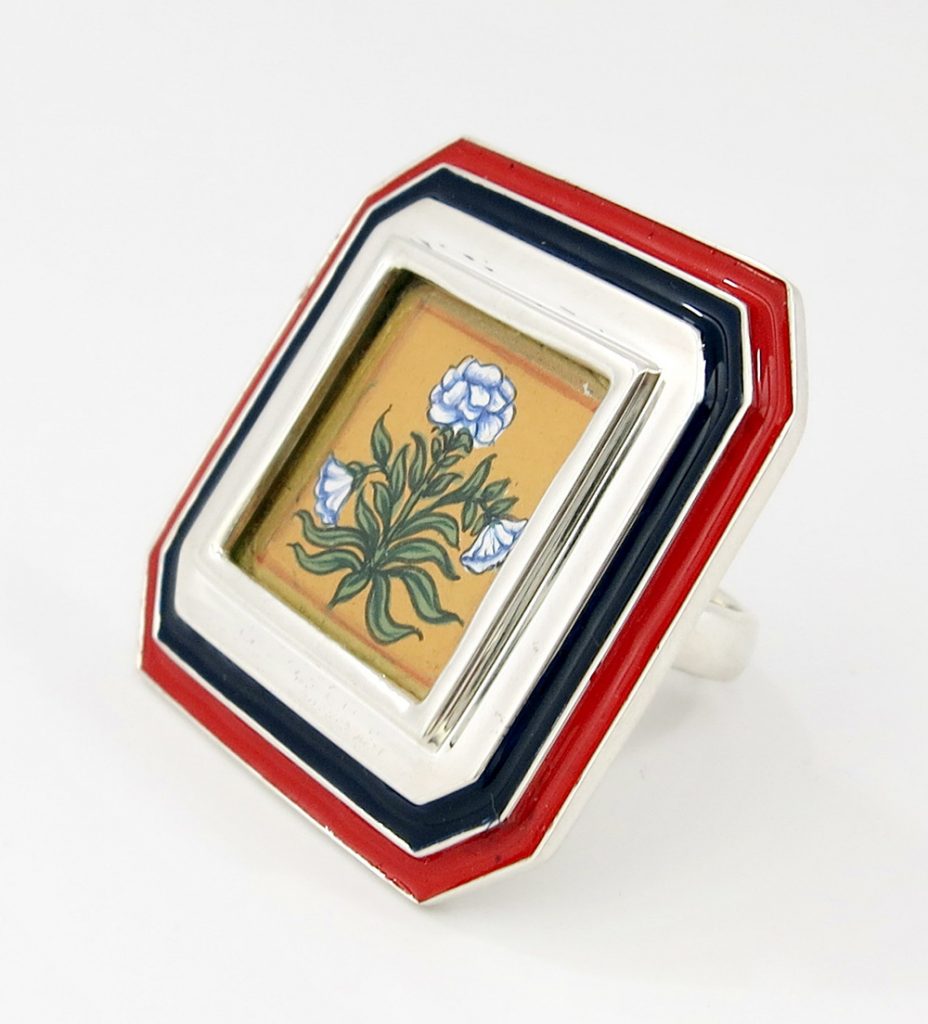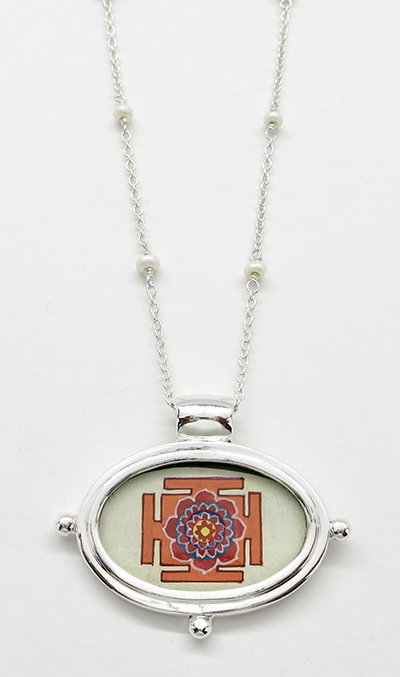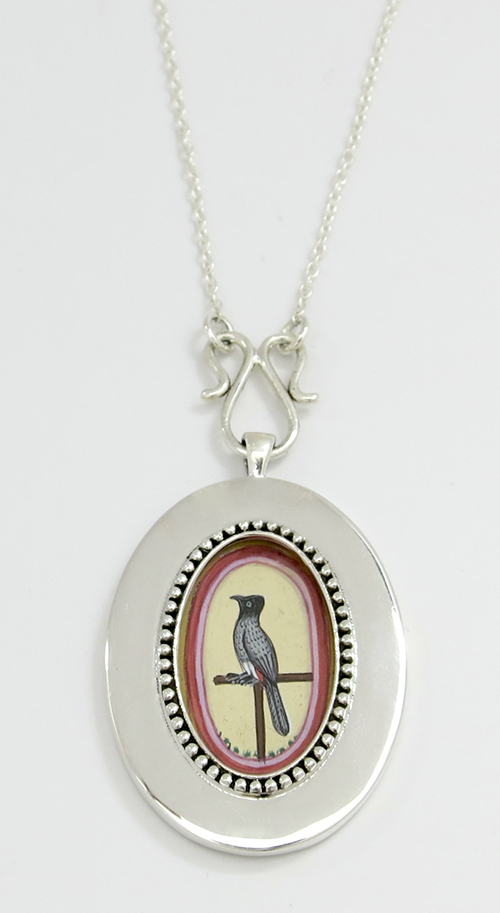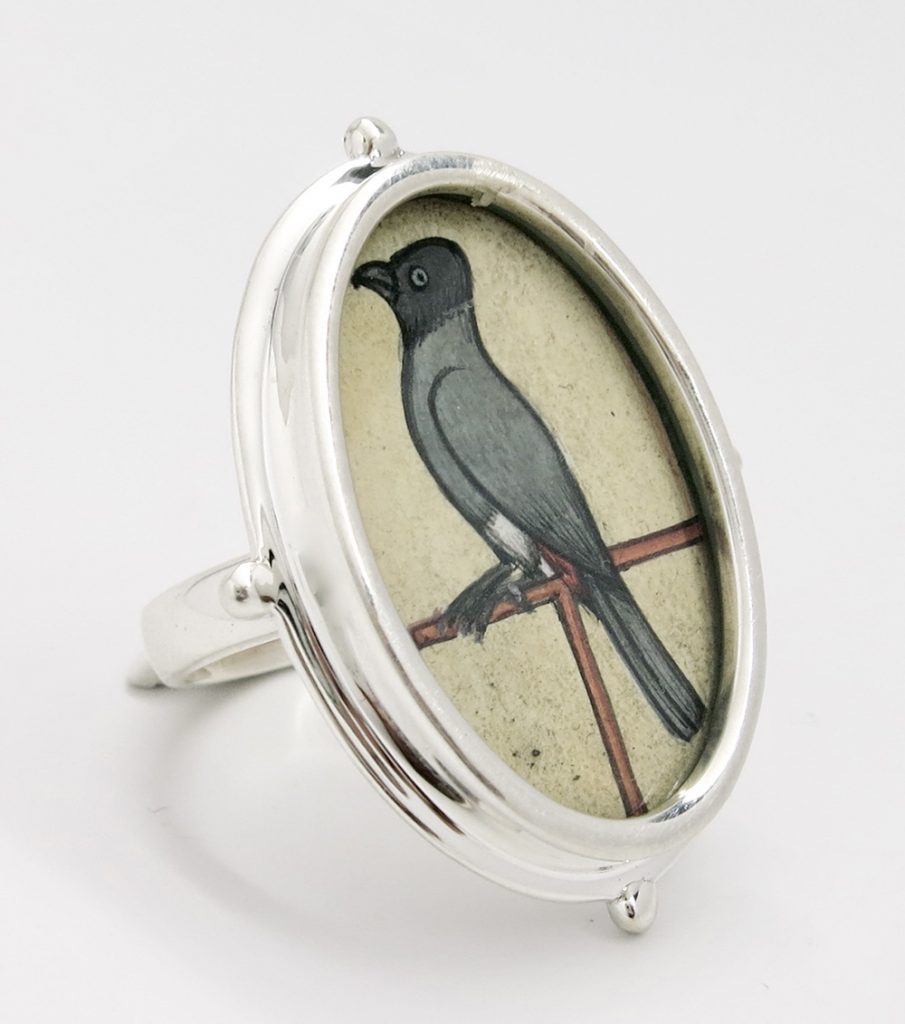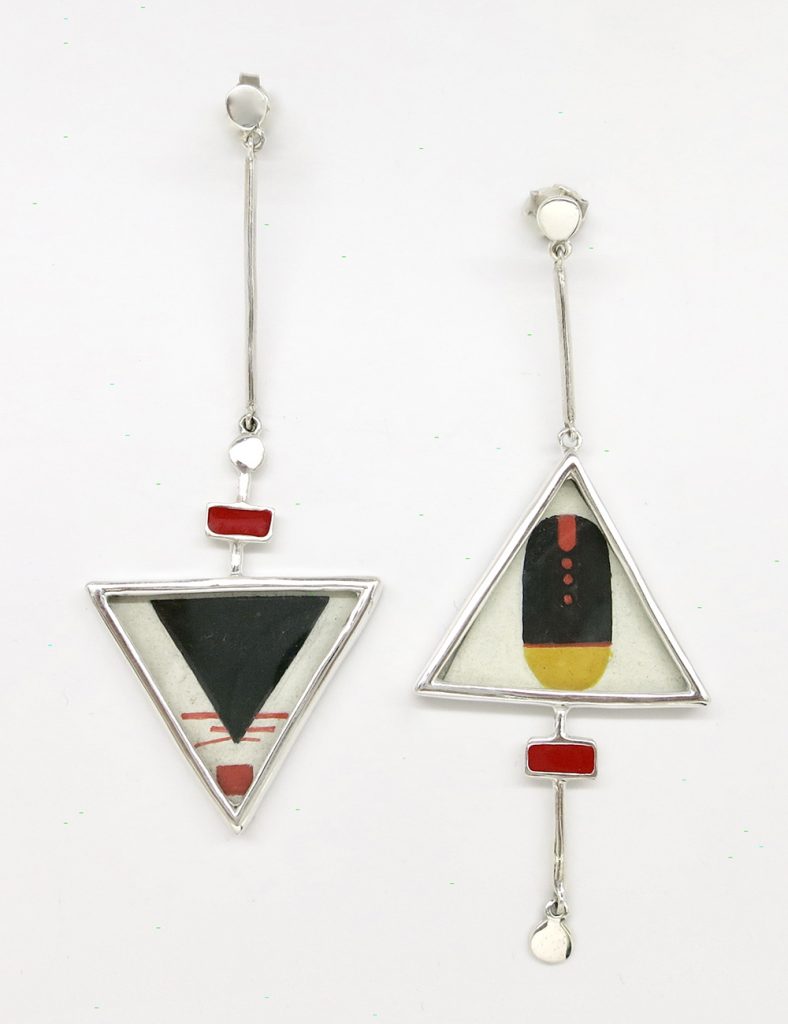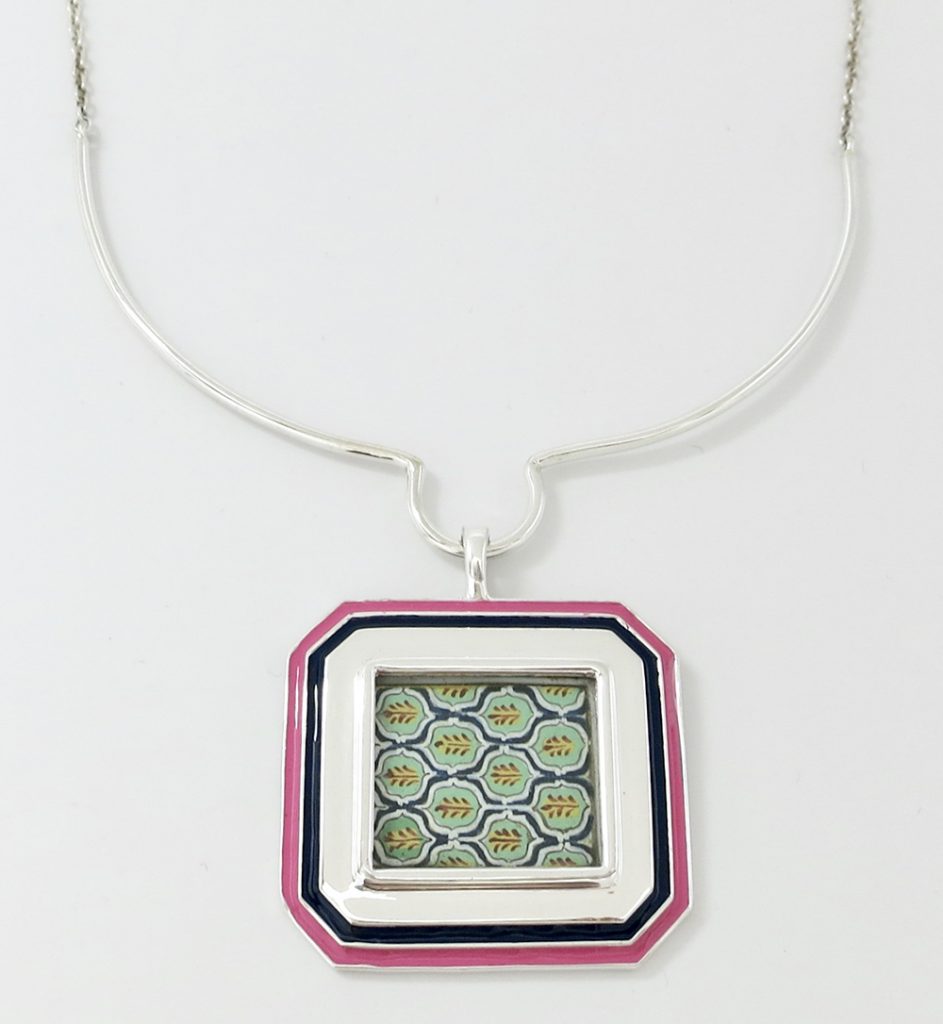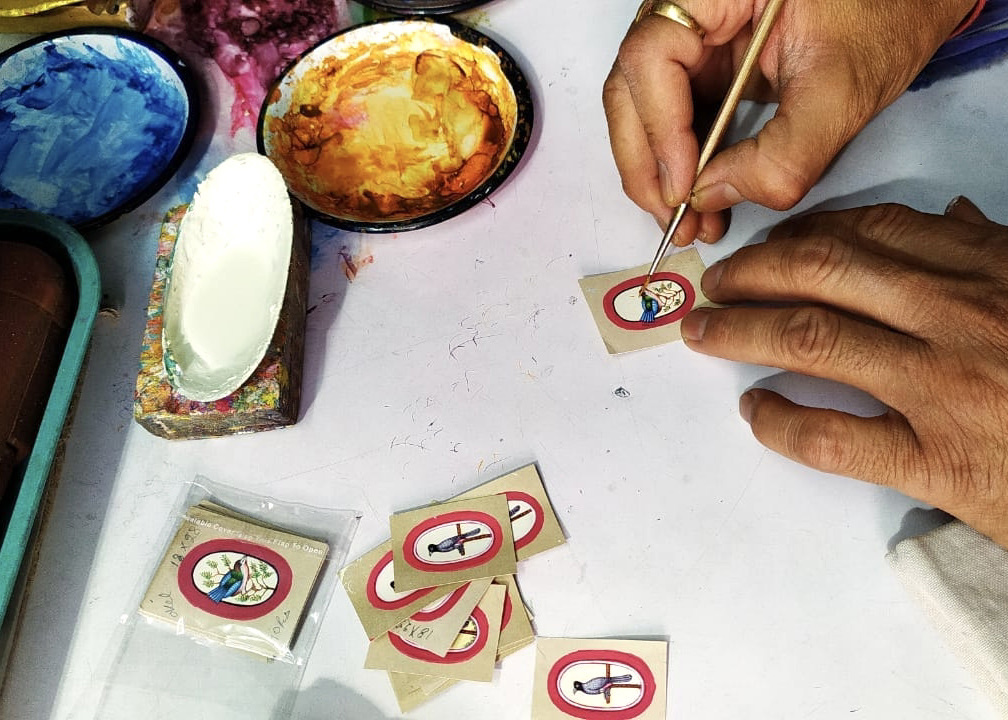California-based Puja Bhargava Kamath, creative head and founder of Lai Designs, shares details about her latest contemporary silver collection, The Miniaturist, which features hand-painted miniature paintings by two expert Rajasthani chitrakars. Laden with historic and cultural references, the collection effortlessly integrates age-old artistry with whimsy.
Puja Bhargava Kamath, creative head and founder of Lai Designs, is based out of two locations – California and India. Celebrating a decade of its existence this year, Lai is a design-led collaboration with artisan clusters in India, to create contemporary jewellery that blends traditional craftsmanship with a modern aesthetic and sustainable design ethos.
Puja states, “Lai was born out of the need I felt to work with regional design idioms and age-old techniques and incorporate them into the aesthetics of a modern woman’s wardrobe. Celebrating the much overlooked ‘Indian Minimalism’, my designs are both culturally nuanced and forward-looking at the same time. Through our jewellery collections, we aim to promote the work of Indian artisans and in some way, help to revive fading artistic traditions.”
Your latest collection is inspired by Rajasthan’s miniature paintings. How long did it take you to research and find the best miniaturist?
Just as consumers are increasingly mindful of what they buy, we as creators, at Lai, are also growing more mindful and purpose-driven in our work. And it’s all about working with and promoting age-old artisanal handicraft techniques with an emphasis on the hand, for us.
I’ve always loved miniature painting, and over the years, I invested in a few paintings for our home. Gradually the idea of extending this craft to jewellery started taking shape in my head.
Two years ago, we went on a quest to find the few remaining chitrakars or artists who specialised in miniature painting for jewellery. Find them we did, and for our new collection, The Miniaturist, we’re fortunate to have collaborated with two of them. One in Ajmer and the other in Jaipur – both of whom learned this exquisite and painstaking art from their forefathers, who were artists in royal courts.
Using the same techniques and skills used since the 16th century, passed down through families and traditional guilds, from fathers to sons, this is truly a collector’s collection and one we’re so proud of!
How did the transfer of paintings into jewellery take place?
The first part in creating this collection was, obviously, to design it – not just the forms but also zeroing in on motifs to be used in every design. The second stage was to get the miniature paintings or artworks made. This was followed by the third and final stage in which our silver artisans in Jaipur set these artworks into the finished jewellery form.
In every single piece of jewellery, enclosed between a silver plate at the back and a glass front, are genuine hand-painted miniature paintings.
Could you elaborate on the art of miniature painting?
An extremely refined skill, the art of miniature painting can be traced back to the Mughals some 460 years ago and it is practiced, in an amazingly unchanged way, to this date.
To make these minuscule masterworks, the artist uses superfine brushes composed of the hair of a squirrel’s tail, and depending on the painting, commercial and/or naturally derived colours are used such as blue from lapis and indigo, green from malachite, and verdigris, burnt conch shell for white, geru and red carmine for red, etc. The base is a locally procured handmade paper.
While combining different crafts – in this case, the miniature painting and silversmithing — brings a whole new set of challenges, the end result is so unique that it makes all the effort and time invested worth the while.
Two continents, four cities, two chitrakars (miniature painters), 13 jewellery karigars, and a pandemic. No other collection of ours has demanded such a long gestation time, so much coordination, and such a lot of patience! After 18 months of work – designing, prototyping, numerous WhatsApp calls and messages, couriers, and travels, including a three-month trip to India at the cusp of Covid last year, ‘The Miniaturist’, was ready to be shared with the world.
What is your take on artisans or painters getting the spotlight for their expertise? Normally, they work behind the scenes without much recognition.
At Lai, we’ve always believed in shining the spotlight on the makers — the actual people who bring our designs to life with their skills and their hands.
Having worked in the jewellery and craft sector for more than 20 years, I’d go as far as to say that those who think that only designers/designing should be feted are so wrong. What good are ideas in your head or on paper if you don’t have the skilled hands of artisans, and their generational wisdom and know-how to bring them to life? It’s imperative we share the credit with the artisans we collaborate with and ensure they become active beneficiaries in the success earned through their craft.
You have taken India to the world through your collections. How did you manage to straddle the two worlds – America and India?
It hasn’t been easy! And it remains a constant hustle! But having one foot in the US has opened up a fascinating and promising channel of revenue (and appreciation!) for us and our artisan partners, who are proficient in Bidri, Channapatna lacquerware, or Miniature painting.
Having no prior experience of connections, we just took a leap of faith and literally jumped into the deep end of the pool. NY Now, a gigantic wholesale trade show in New York was our learning ground. It was a steep (and expensive!) learning curve but eventually, the hard work paid off.
The quality of our craftsmanship and designs has led to our jewellery being sold in many fine museums stores and boutiques across the United States and earned us a participation in the coveted International Folk Art Market (IFAM) in Santa Fe this year. IFAM was our first such retail show in the US and the appreciation we got for our work has been more than what we could have hoped for. We’ll surely be focusing more on direct retail outreach in the US.
With respect to India, online sales through our web shop remain our mainstay. We’ve been looking for a partner/India manager who will make it possible for taking part in domestic exhibitions, but Covid put a spanner in all such plans!
Who are your consumers? Do they appreciate Indian stories/motifs?
In India, primarily our clients are women in metros, between 30-50 years of age, who appreciate a fresh take on Indian culture, good design, and fine craftsmanship.
In the US, it is the same audience age-wise, but our appeal is more niche and lies amongst women who are well-travelled, appreciate world cultures, and like jewellery that’s more unique than what they see everywhere else. Good design and a good story are the clincher!
Did the pandemic affect your business?
Oh yes! Just like any other small business, especially one reliant on e-commerce, for the first few months during the initial lockdown in March 2020, our business pretty much came to a standstill. Even after that, sales were slow given the general sentiment. And let’s be honest, jewellery was not a priority on anyone’s mind!
We used this time to revamp our website and changed our brand logo after nine years!
We also soft-launched a sister brand, Craft Stories created especially for our Western audiences with both home and personal accessories. We hope to offer a fresh take on the Indian aesthetics and introduce to the West lesser-known crafts from India like Bidri and Channapatna lacquerware. We debuted it with our first-ever non-jewellery collection of silver wire inlaid Bidri metal plates and have been thrilled with the response!
The US and other international clients in the West can shop from our US website us.lai-designs.com (we ship out of California), and our Indian clients (and those in geographies best served from India) can shop our jewellery from in.lai-designs.com (ships out of Noida).
History Of Miniature Paintings
The tradition of miniature paintings can be traced back to the Mughals some 460 years ago. During the reign of Akbar (1560 A.D.), a large number of Indian artists from all over India were recruited to work under the Persian masters, who were brought to India by his father, Humayun. Marked by supple naturalism based on close observation of nature and fine, delicate drawing, the Mughal style, thus, evolved as a result of a beautiful synthesis of the indigenous Indian style of painting and the Safavid school of Persian painting.
However, unlike Mughal painting, which was primarily aristocratic and secular, the art of painting in Central India, Rajasthan, and the Pahari region, etc., at the time, was deeply rooted in the Indian traditions inspired by Indian epics, religious texts like the Puranas, folk-lore, love poems, and musical themes.
As the Rajput rulers of these areas entered into political and matrimonial alliances with the Mughals, smaller artists from Mughal courts started migrating and found employment at these local courts carrying with them the popular version of the Mughal style and influencing the existing styles of paintings there. The result was distinct regional styles, incorporating elements of Hindu, Persian, and European influences.
Many important painting schools came into being and flourished in different parts of the region, in the 17th and 18th centuries, broadly divided as Mughal, Rajput/Rajasthan (Malwa, Mewar, Bundi- Kotah, Amber-Jaipur, Bikaner, Marwar, and Kishangarh), and Deccan schools.


